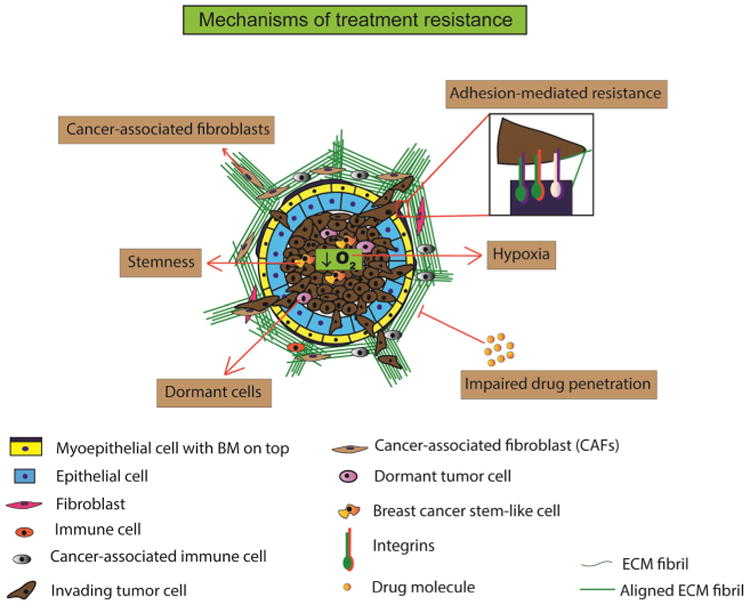Fig. 3.

Mechanisms of treatment resistance. The breast cancer ECM mediates resistance to chemotherapy and radiation therapy in a number of ways. (i) Adhesion-mediated resistance entails aberrant mechanosignaling, upregulation of certain tumor-promoting integrins and non-integrins, and integrin clustering resulting in chemotherapeutic resistance. (ii) Hypoxia and stemness are known perpetrators of chemotherapeutic resistance. ECM is postulated to be involved in feedforward mechanisms wherein increased ECM stiffness increases hypoxia and stemness and subsequently resistance to anti-cancer agents. (iii) Impaired drug penetration occurs due to increasingly rigid ECM that physically inhibits cytotoxic molecules to reach the tumor cells. (iv) Dormant cells, induced by ECM mechanics, are inherently resistant to chemotherapeutic agents that target actively proliferating cells. Thus, dormancy within the tumor microenvironment ensures survival of these resistant tumor cells and their activation and proliferation at a suitable time. (v) Chemotherapeutic drugs mediate conversion of normal fibroblasts to cancer-associated fibroblasts (CAFs). These secrete fibronectin and collagen causing extensive ECM remodeling and facilitating chemotherapy-induced alterations in the ECM and resistance to treatment
